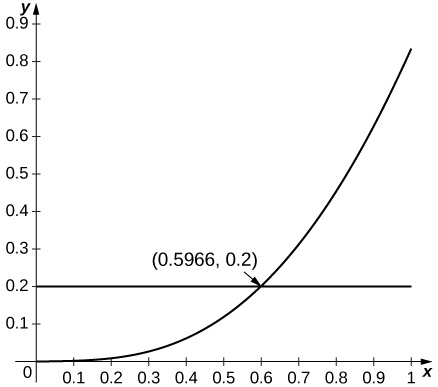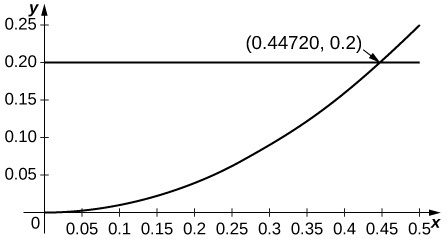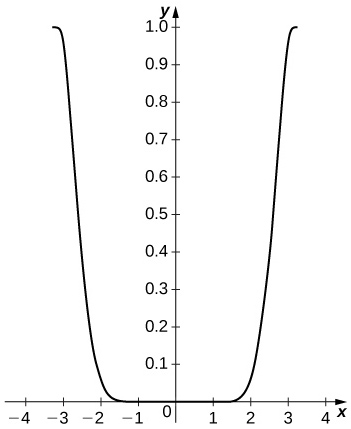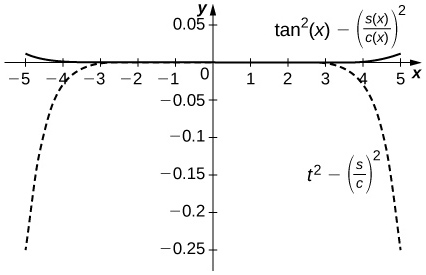| << Chapter < Page | Chapter >> Page > |
[T] e x approximated by
[T] approximated by x ,

Since
is increasing for small
x and since
the estimate applies whenever
which applies up to
[T] approximated by
[T] approximated by

Since the second derivative of
is
and since
is decreasing away from
the estimate applies when
or
In the following exercises, find the Taylor series of the given function centered at the indicated point.
at ( Hint: Differentiate
at ( Note : is the Taylor series of
In the following exercises, compute the Taylor series of each function around
[T] In the following exercises, identify the value of x such that the given series is the value of the Maclaurin series of at Approximate the value of using
The following exercises make use of the functions and on
[T] Plot on Compare the maximum difference with the square of the Taylor remainder estimate for
[T] Plot on Compare the maximum difference with the square of the Taylor remainder estimate for

The difference is small on the interior of the interval but approaches
near the endpoints. The remainder estimate is
[T] Plot on
[T] Compare on to Compare this with the Taylor remainder estimate for the approximation of by

The difference is on the order of
on
while the Taylor approximation error is around
near
The top curve is a plot of
and the lower dashed plot shows
[T] Plot where on Compare the maximum error with the Taylor remainder estimate.
(Taylor approximations and root finding.) Recall that Newton’s method approximates solutions of near the input
a. Answers will vary. b. The following are the values after iterations of Newton’s method to approximation a root of for for for ( Note: c. Answers will vary.
In the following exercises, use the fact that if converges in an interval containing then to evaluate each limit using Taylor series.

Notification Switch
Would you like to follow the 'Calculus volume 2' conversation and receive update notifications?